Invisalign – York, PA
Enjoy a Straighter Smile Without the Hassle
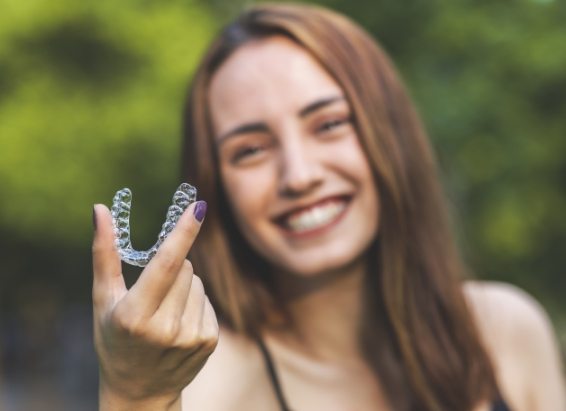
If you’d like straighter teeth but would rather avoid the clunkiness of bracket-and-wire braces, you’re not alone. We offer an image-friendly form of orthodontics here at Aesthetic Dental Arts: Invisalign clear aligners. With these see-through trays, you can enjoy a straighter smile without the hassle of metal braces. To learn more about getting the perfectly aligned set of pearly whites you deserve, contact us and schedule a consultation for Invisalign in York with Dr. Sikander Singh.
Why Choose Aesthetic Dental Arts for Invisalign?
- Digital Scanner for Comfortable, Goop-Free Impressions
- Caring Dentist & Team Who Treat Patients Like Family
- Dental Insurance Accepted & Affordable Financing Available
What Are Invisalign® Clear Aligners?
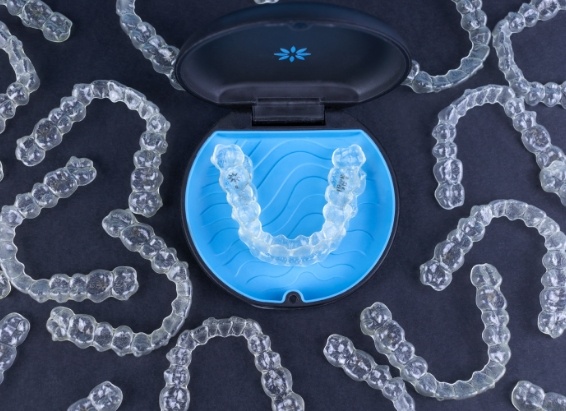
Instead of uncomfortable metal wires and brackets, Invisalign gradually repositions your teeth with a series of clear trays called aligners. You’ll wear each set of aligners for about 22 hours per day before moving onto the next set after a few weeks. Essentially, you’ll have the aligners in at all times unless you’re eating, drinking, brushing, or flossing.
Who Can Invisalign Help?

Invisalign is a versatile treatment that can address a wide range of mild-to-moderate orthodontic problems in a more comfortable way than traditional braces. The only way to know if you can be a suitable candidate for the treatment is to schedule a consultation with Dr. Singh so he can evaluate your oral health and determine the best way to help you achieve a straighter and prettier smile. Here’s a quick look at a few common issues Invisalign can address:
Crowded Teeth

Teeth that are too close together are harder to clean, easier to injure, and more vulnerable to infection. Invisalign can address this issue by spreading the teeth apart so they stand up straight and distribute the pressure of chewing more evenly. This can also make brushing and flossing easier.
Gaps Between Teeth

Large gaps between teeth can accumulate plaque and food debris and leave the gums vulnerable to injury. Invisalign can correct this problem by drawing the teeth closer together, which will allow them to function more efficiently while protecting the gum tissue.
Overbite

An overbite, also called an overjet, is a type of dental misalignment characterized by the top teeth being positioned too far in front of the bottom ones. This issue can lead to a host of problems like jaw pain, speech difficulties, uneven dental wear, and discomfort when opening or closing the mouth. An overbite can also leave the top teeth more vulnerable to injury.
Underbite

An underbite involves the bottom teeth being positioned in front of the top ones when the mouth is closed, and it is usually caused by genetic factors, injuries, tumors, or prolonged non-nutritive habits such as thumb-sucking during childhood. Treating an underbite with Invisalign may require additional appliances such as elastics.
Crossbite
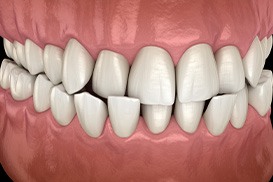
Crossbite refers to when the bottom teeth are slightly in front of the upper arch when the mouth is closed, and it may be due to genetics, poor oral hygiene, or premature loss of baby teeth. Invisalign can often address this issue, but doing so may require the use of elastics or other accessories designed to shift the jaw into a healthier position. An unaddressed crossbite can lead to long-term problems like gum disease, tooth decay, jaw pain, speech problems, headaches, grinding, and facial asymmetry.
Open Bite
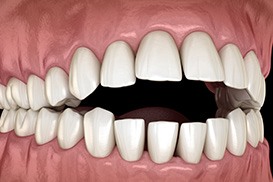
An open bite happens when the top and bottom teeth do not touch or overlap when the mouth is closed, and it is usually the result of poor bone development or non-nutritive habits such as thumb-sucking going on too long during childhood. An open bite can make pronouncing certain words difficult and place excessive strain on the back teeth. Invisalign aligners can draw the top and bottom teeth closer together to correct the bite pattern and protect the smile from damage.
Benefits of Invisalign
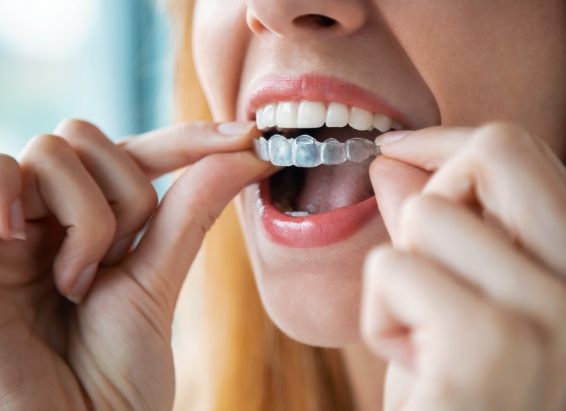
If you’re currently trying to decide if Invisalign is right for you, you might find it helpful to hear why patients who were once in your shoes chose it. For that reason, we’re covering a few of the many benefits of this orthodontic treatment in the next section. So, read on, or give us a call if you’d prefer to speak with a member of our team directly!
Comfortable Aligners

Although traditional braces are versatile and effective, they leave much to be desired when it comes to comfort. In fact, many patients struggle with soft tissue irritation from the brackets and wires. The good news is that Invisalign aligners are completely metal-free; they are crafted from a smooth, low-profile plastic instead, which makes them considerably more comfortable.
Easy Oral Care

Interproximal toothbrushes are just one of the many special oral hygiene tools patients with traditional braces need to effectively clean their teeth and braces. Since Invisalign aligners are removable, the same cannot be said for this orthodontic treatment! The only adjustment you will need to make to your oral hygiene regimen is brushing your teeth after lunch (if you aren’t already, that is).
Eat Whatever You Want

Popcorn, tortilla chips, raw nuts, and whole apples are a few of the many foods that patients with traditional braces need to avoid. If that’s been a concern of yours, you’ll be happy to hear that Invisalign doesn’t come with any dietary restrictions – you can eat whatever you want! Just do your best to stick to a well-balanced diet to keep your teeth and gums healthy.
Discreet Appearance

Of course, one of the biggest benefits of Invisalign is that the aligners blend in seamlessly with your teeth. As a result, even those closest to you won’t notice you’re wearing them! All you need to do is make sure to adopt healthy habits, like rinsing them with clean, cool water each time you take them out, so stubborn stains don’t surface.
Shorter Average Treatment Timeline

Usually, patients wear traditional braces for 2-3 years. Invisalign, on the other hand, has an average treatment timeline of only 12-18 months. There are even some cases where patients work through their series of clear aligners in as little as six months, like if their case of malocclusion was relatively minor. In short, there’s a good chance that your teeth-straightening journey will be shorter with Invisalign!
Quick Follow-Up Appointments

If you’re a student, parent, or professional with a demanding schedule, you might be hesitant to move forward with clear aligner treatment. If that’s the case, you’ll be happy to hear that the check-in visits are usually less than 20 minutes! That makes it easy to schedule them over your lunch break or on your way home from school or work.
Understanding the Cost of Invisalign
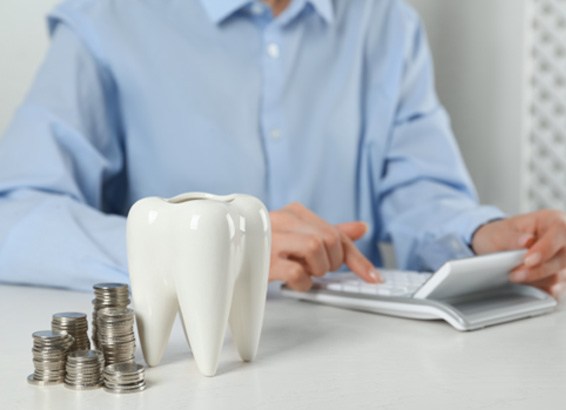
Even if you want to try Invisalign, you should first learn its price. You can’t get a treatment if it exceeds your budget, right? That said, note that the cost of Invisalign varies from patient to patient; you’ll need to consult Dr. Singh for a precise estimate. Our team will also strive to make your treatment smooth and affordable. In fact, we’ll walk you through Invisalign’s pricing factors and payment options. Read on or call us to learn more.
Factors That Affect the Cost of Invisalign

When you attend your consultation visit, Dr. Singh will give you an oral exam. This step lets us confirm the factors that affect your treatment cost, which can include:
- Number of Treated Arches – In reality, Invisalign doesn’t have to treat both rows of teeth. You can choose to have one arch straightened for a lower price.
- Treatment Complexity – When the needed tooth movements get more complex, Invisalign gets more expensive.
- Treatment Timeline – As you’d expect, longer treatment times mean more aligners and higher costs.
- Patient Compliance – If you neglect Invisalign's best practices, your treatment results will be delayed. You’ll then have to pay a higher expense.
Invisalign vs. Mail-In Aligners: Which Costs More?
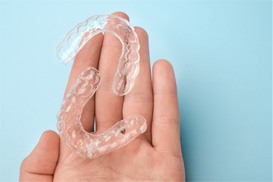
Technically, Invisalign costs more upfront than mail-in aligners. The full treatment can range anywhere from $3,000 to $8,000 – a higher amount than the second option’s $2,000. Given that fact, it’s easy to think mail-in-aligners are the more cost-effective deal.
However, keep in mind that mail-in aligners are a DIY effort. They don’t rely on or benefit from a dentist’s expertise and oversight. As a result, using them can lead to oral issues like poorly made dental impressions, bad aligner habits, etc. You’d need professional care to fix such problems, and that’d defeat the purpose of mail-in aligners.
The good news is that Invisalign lacks this oversight problem. Here at Aesthetic Dental Arts, it benefits from Dr. Singh’s input on your treatment progress. That means it should give you high-grade impressions and very successful care, justifying your procedure’s cost.
Does Dental Insurance Cover Invisalign?

In most cases, dental insurance doesn’t cover Invisalign. Many plans don’t even apply to orthodontic work in general. If a plan does have benefits, it likely won’t extend to Invisalign.
Despite the above, there are exceptions. Some dental plans can cover up to 50% of Invisalign’s cost. That being the case, please confirm your benefits before you commit to treatment. Our office can even help you reach out to your plan provider.
Options for Making Invisalign Affordable

In truth, dental insurance isn’t the only way to reduce Invisalign’s price. You can also make treatment more affordable with our practice’s payment options. Here at Dr. Singh’s office, we have:
- Special Offers – Our practice has a special deal on Invisalign. You can get it for $200 off, with a free take-home whitening kit provided afterward.
- Flexible Financing – It so happens that we work with CareCredit, a reputable 3rd party financier. Their help would let you pay for Invisalign through no-interest monthly installments. That way, you could cover the cost of care gradually.
Ultimately, Aesthetic Dental Arts wants to straighten your smile without breaking the bank. Find out how to finance our Invisalign treatment by seeing us soon!
Invisalign FAQs
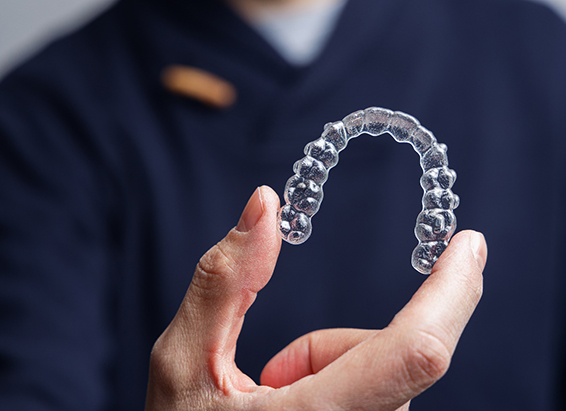
As always, any questions you have regarding the treatment you’re interested in – from what to expect at the consultation to what influences the price – you’re welcome to bring directly to our team. However, we’ve dedicated this next section to FAQs since many of our patients value having the option to continue their research online as well. With this in mind, read on for FAQs about Invisalign!
Does Invisalign Hurt?
Have you heard from a friend, colleague, or someone on the internet that Invisalign hurts? If so, don’t let that stop you from pursuing clear aligner treatment. After all, Invisalign is considerably more comfortable than traditional metal braces. Plus, orthodontic treatment of any kind comes with some soreness – that means it’s working! Our York dental team will also give you helpful tips on how to alleviate any discomfort that does arise, like sipping on cold water and taking OTC pain medication as directed.
How Long Does Invisalign Take?
One of the perks of Invisalign is that the treatment timelines are typically shorter than traditional braces. While patients usually need to dedicate 2-3 years to metal brackets and wires, Invisalign’s average treatment timeline is just 12-18 months. In fact, some patients work through their series of clear aligners in as little as six! If you’re interested in getting an estimate of your treatment timeline, then don’t hesitate to schedule a consultation with us.
Can You Eat with Invisalign?
There is an important rule when it comes to eating: you need to remove your aligners first. Outside of that, however, there aren’t any guidelines you need to follow since there aren’t any dietary restrictions. Naturally, as your dental team, we still recommend maintaining a well-balanced diet that’s low in added sugar. That way, your chances of developing tooth decay aren’t as high.
What Are Invisalign Attachments?
In short, Invisalign attachments are little pieces of tooth-colored resin that are bonded to your teeth. Sometimes, we add these to our patients’ treatment plans if they have more moderate cases of malocclusion. Basically, the attachments give your aligners a little extra grip, helping them effectively move teeth into their properly aligned positions.
What Happens After Invisalign?
After you’ve worked through your entire series of trays, you’ll come back to our York dental office so we can take scans and pictures of your teeth. Then, we will get to work on your retainer! This orthodontic device is crucial because it helps keep your teeth properly aligned. For a few months, we may ask you to wear it as often as possible (like you did with your aligners). However, you’ll eventually be able to transition to only wearing them at night.



